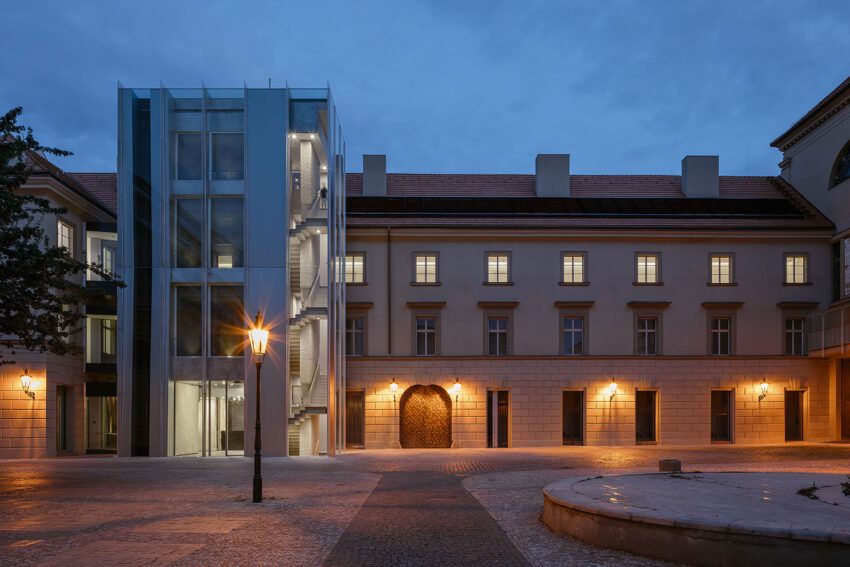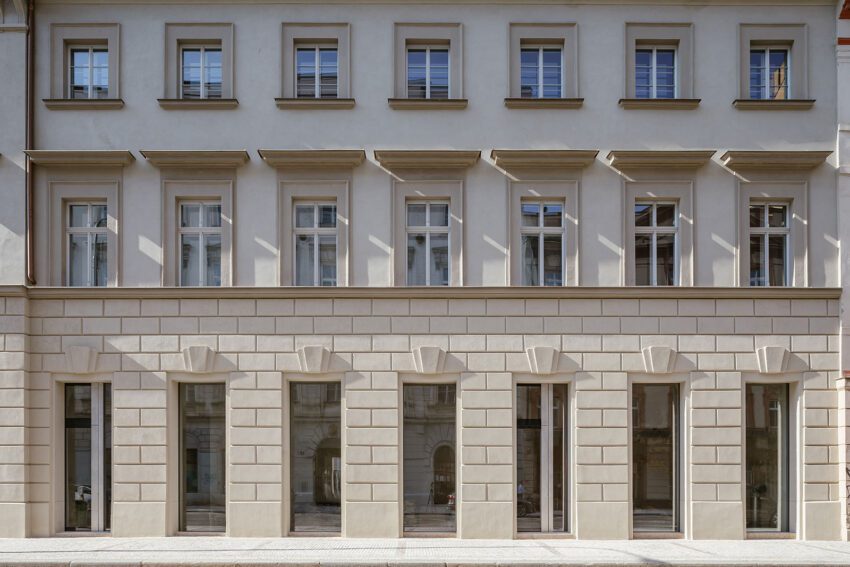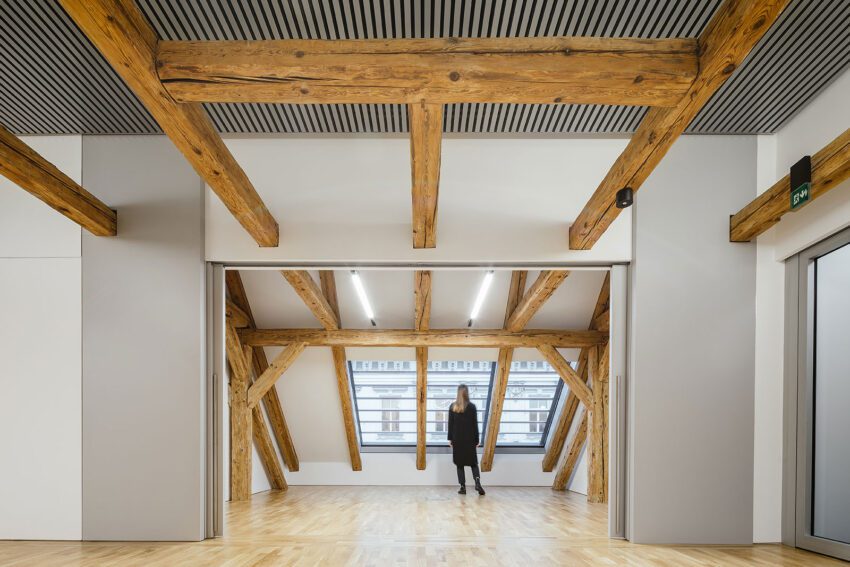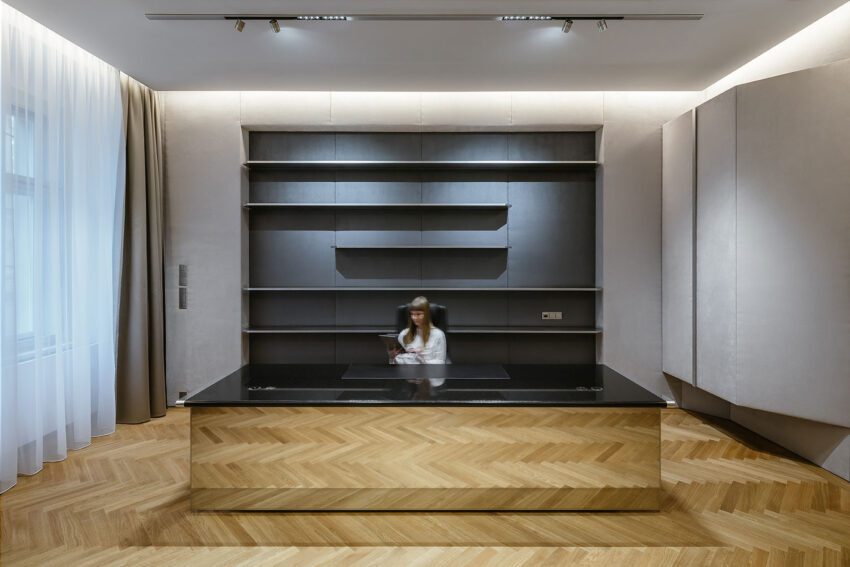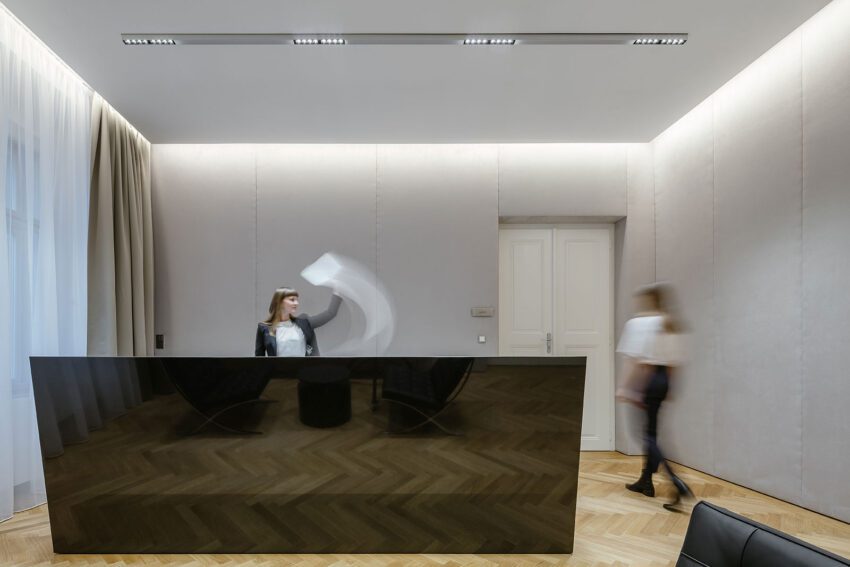A reconstruction of a historical monument that brings a contemporary architectural shape. AARH studio connected a technical-style glass and concrete tower to the originally Baroque monastery on Hybernská Street. The neoplasm confidently enters the open space in front of the building and creates a distinct counterpoint in it.
Hybernská Offices Technical Information
- Architects: Radan Hubička Architectural Studio / AARH
- Location: Prague, Czech Republic
- Plot Area: 702 m²
- Built-up Area: 667 m²
- Enclosed Space: 15,231 m³
- Concept, study: 2017–2019
- Project Year: 2019 – 2021
- Photographs: © Václav Novák
Not only morphologically but also materially, the tower stands in opposition to the former monastery building. The structure of the escape staircase is exposed to the skeleton. Similar to the facade, the clear glass surface alternates with opaque duralumin parts; the smoothly polished staircase surface is complemented by the concrete wall‘s rough structure.
– AARH Architects
Hybernská Offices Photographs

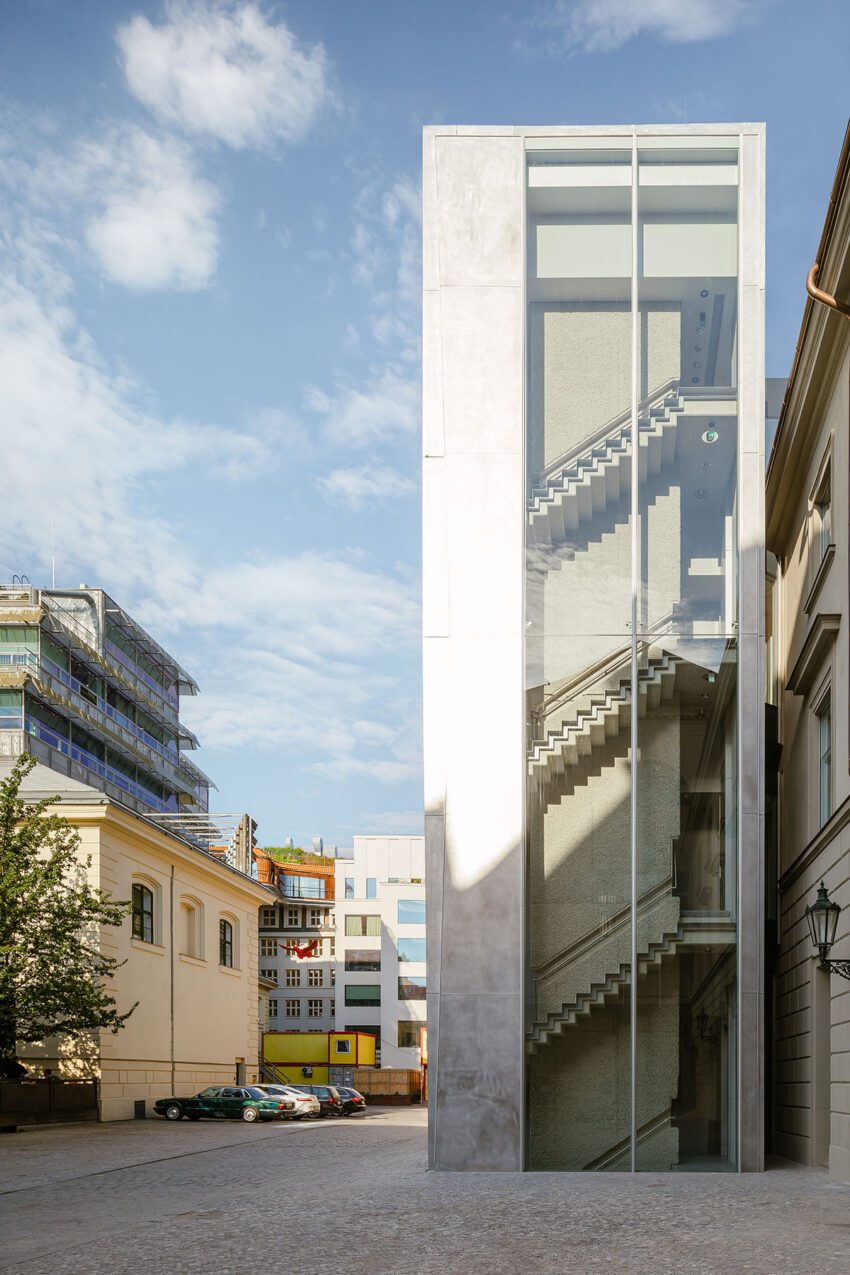
Text by the Architects
The entire reconstruction is based on the contrast between old and new. The historical building’s interior has been transformed into offices and meeting rooms. The extension’s surfaces and ceilings adapt to the individual rooms’ functions: the meeting rooms facing the square have upholstered tiles for acoustic comfort, there is a high pile carpet on the floors, and a heavy drape can be pulled over the large glass surfaces.
In the originally Baroque building with a later Classicist reconstruction, the architects removed all layers that degraded the monument to highlight the original valuable elements: doors with coffered inlays, Kastl [double] windows, barrel and cross vaults, and Classicist trussing. Unpreserved elements such as staircase railings and landing floors have been replaced with contemporary materials and morphology. The roughness and porosity of centuries-old stone is complemented by shiny cast terrazzo floors.
Glass windows with metal frames embedded in the original paneling have added a new quality to the historical facade; the passage through the house between Hybernská Street and Náměstí Republiky [Republic Square] is closed by wooden doors with a plastic sgraffito motif that follows on from the floor’s structure.
The most striking element of the reconstruction is the new addition in the form of a tower, into which all the backbone installations were integrated in order to minimize interference with the listed building. Although it serves primarily as a communication hub, the architects also included meeting rooms in it. Its distinctive aesthetic and material design elevates is to the building’s dominant feature. The tower is separated from the corner optically and in terms of the ground plan, so as not to obstruct the view of the historical facade. A system of glass tubes connected in place of the original windows links it to the building‘s original mass.
Not only morphologically but also materially, the tower stands in opposition to the former monastery building. The structure of the escape staircase is exposed to the skeleton. Similar to the facade, the clear glass surface alternates with opaque duralumin parts; the smoothly polished staircase surface is complemented by the concrete wall‘s rough structure. From the inside, the generous glazing of the extension (the panel on the top floor is nine meters high) provides an unobstructed view of the square, while from the outside it emphasizes the sculptural effect of the staircase, accentuated by the evening lighting.
Not only the tower and staircase itself but also the elevator with the glass cabin has an unexpected light effect: from the side, the elevator’s light rises and falls like a mysterious reflection in the dark. The lighting elements also make the interior special: the unobtrusive ceiling light shines through a thin layer of onyx, and evening lights rise up from the floors, illuminating the walls and ceilings.
The interior is dominated by shades of black, anthracite, grey, and white, in subtle contrast to the natural colors of the wood, reinforced concrete, and polished duralumin. The original historical building and the new extension are unified by cast terrazzo floors in a white and anthracite design. AARH’s contemporary architecture doesn’t harm the historical centre; on the contrary, it brings new, unexpected qualities to it.
Hybernská Offices Image Gallery

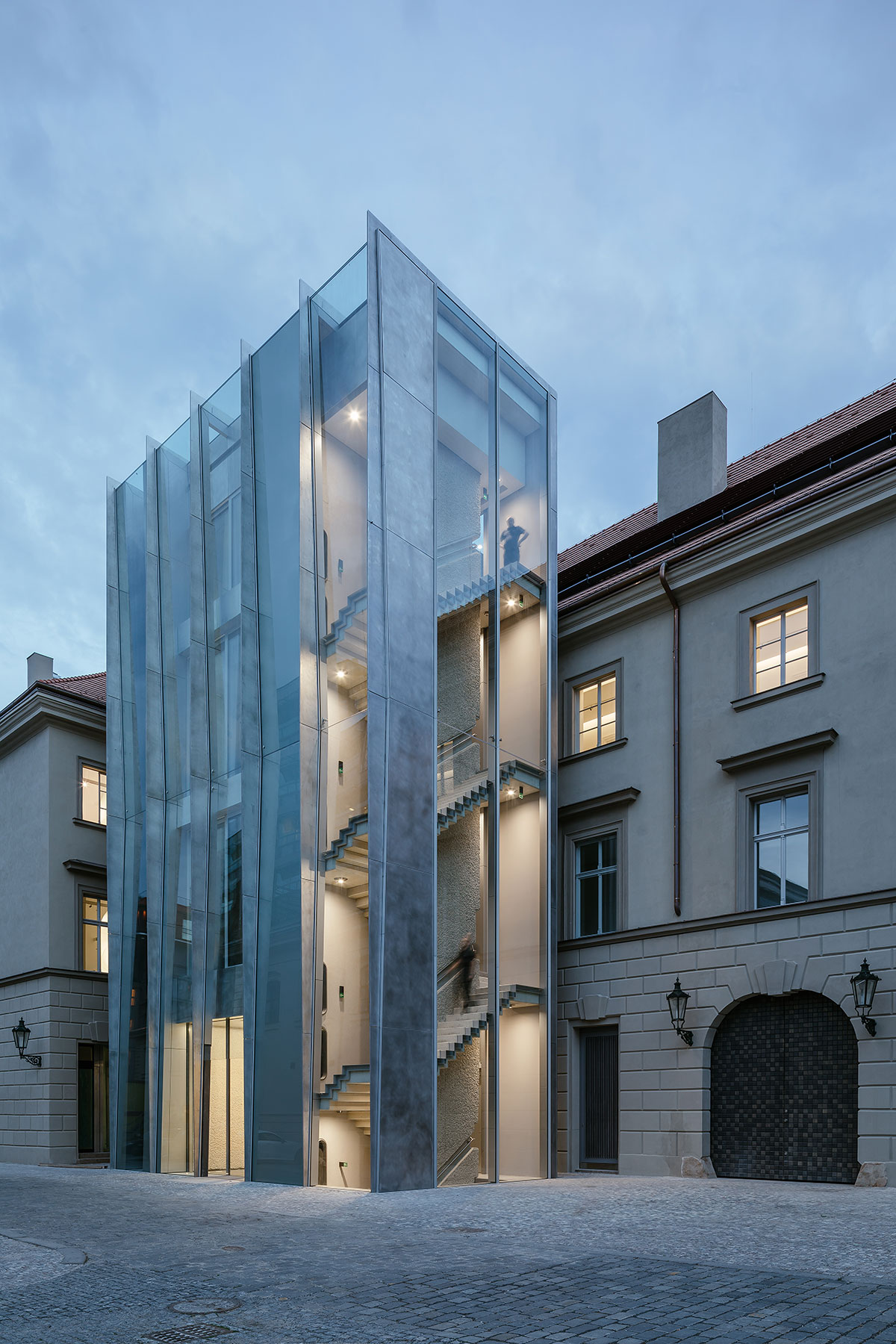

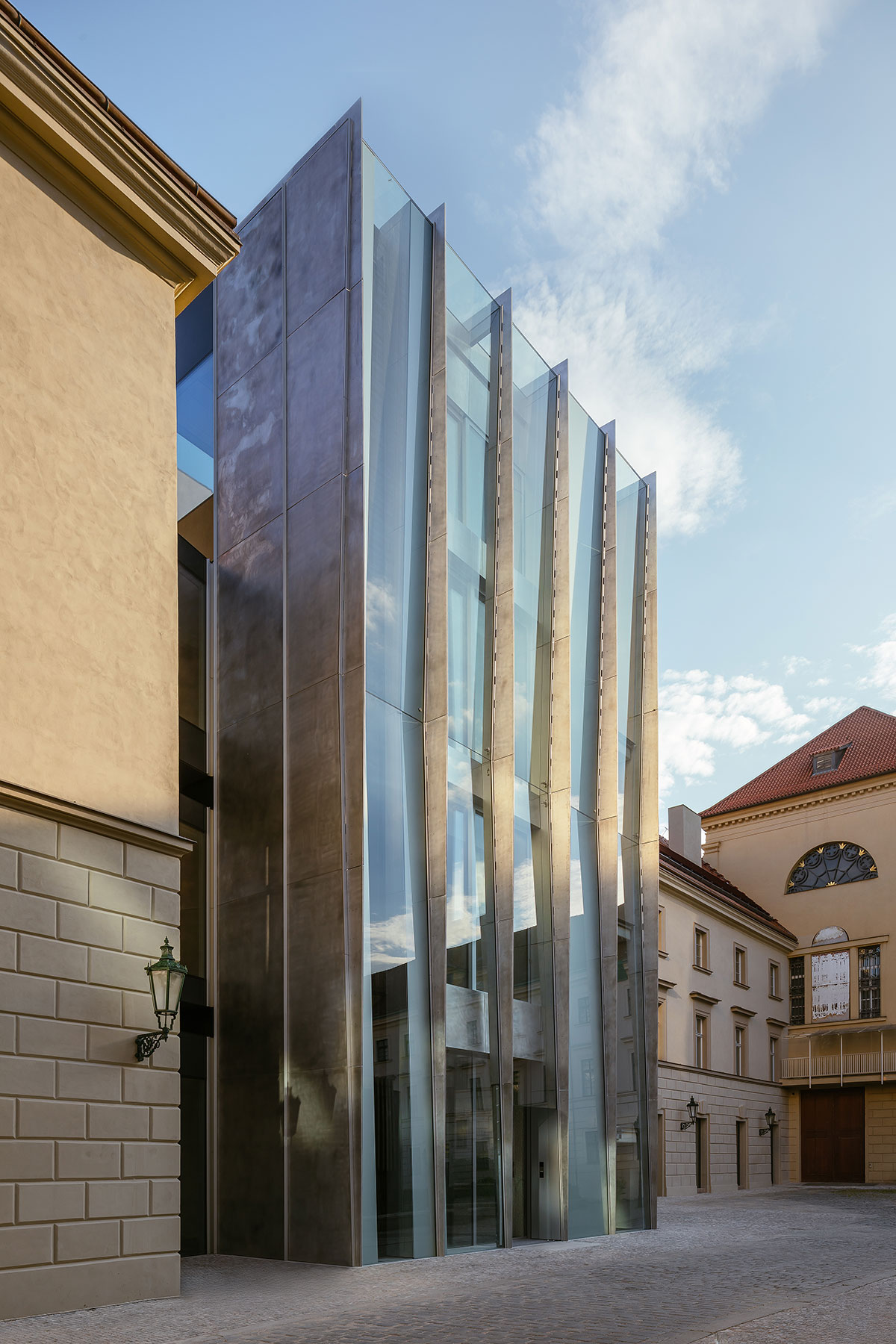
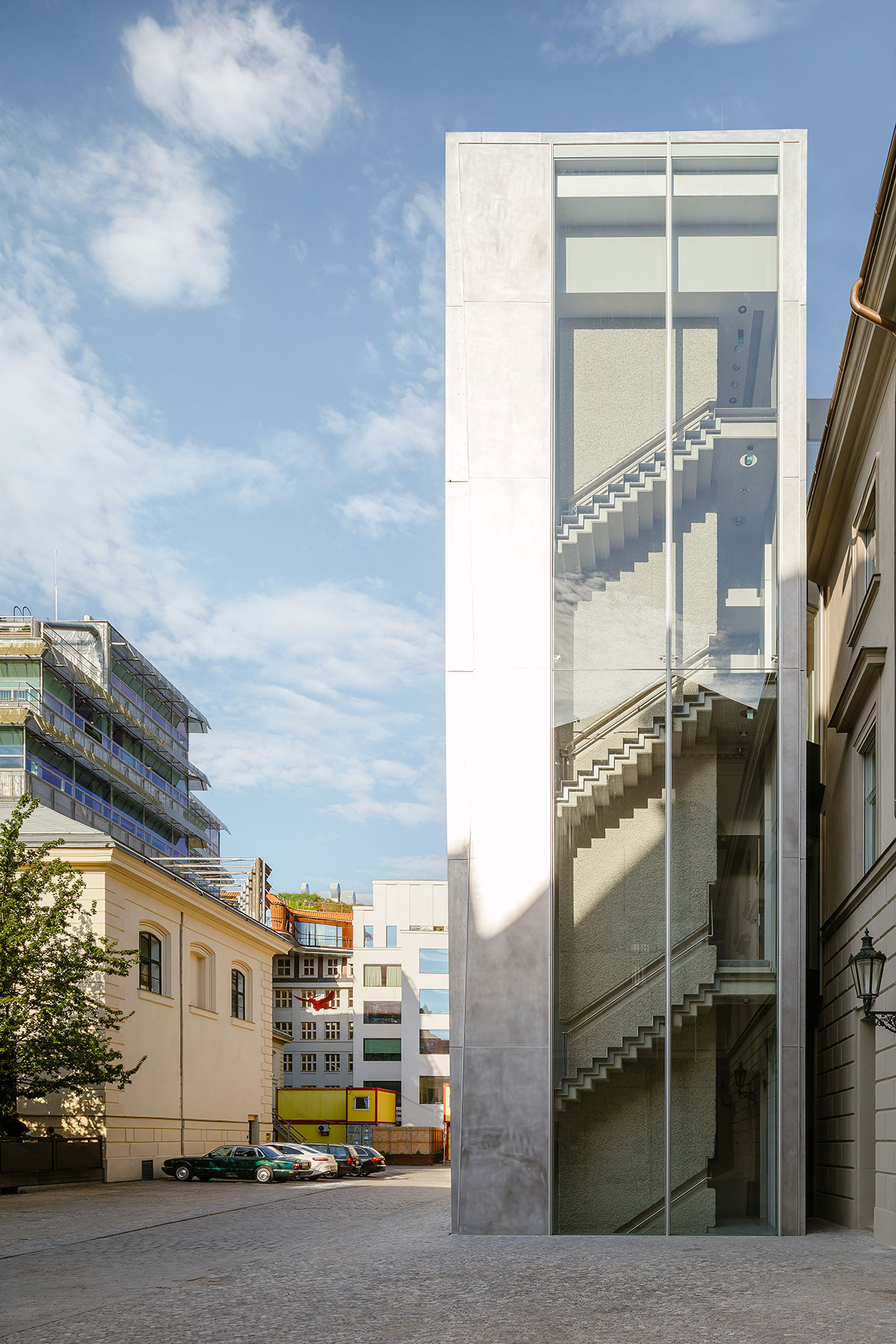
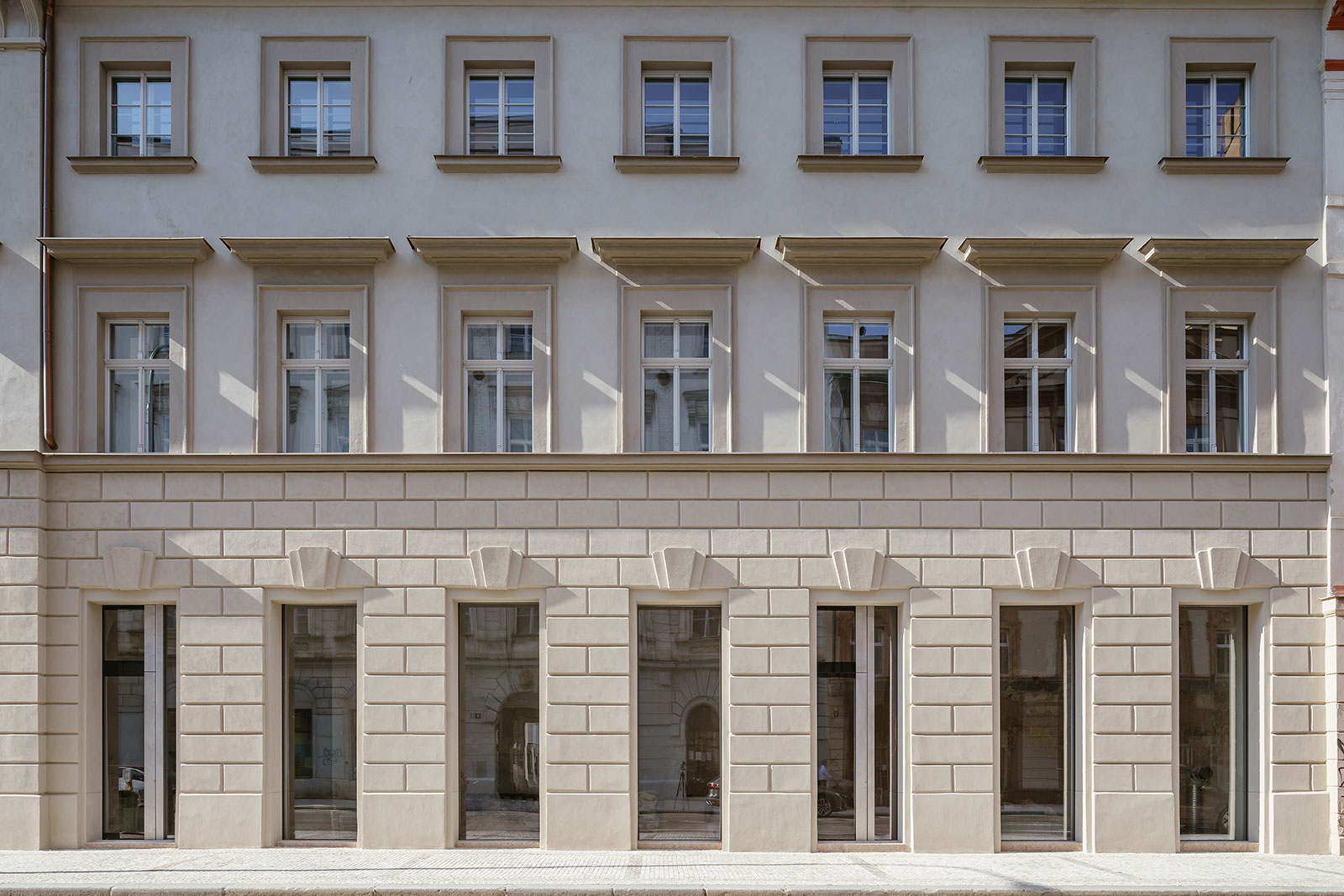

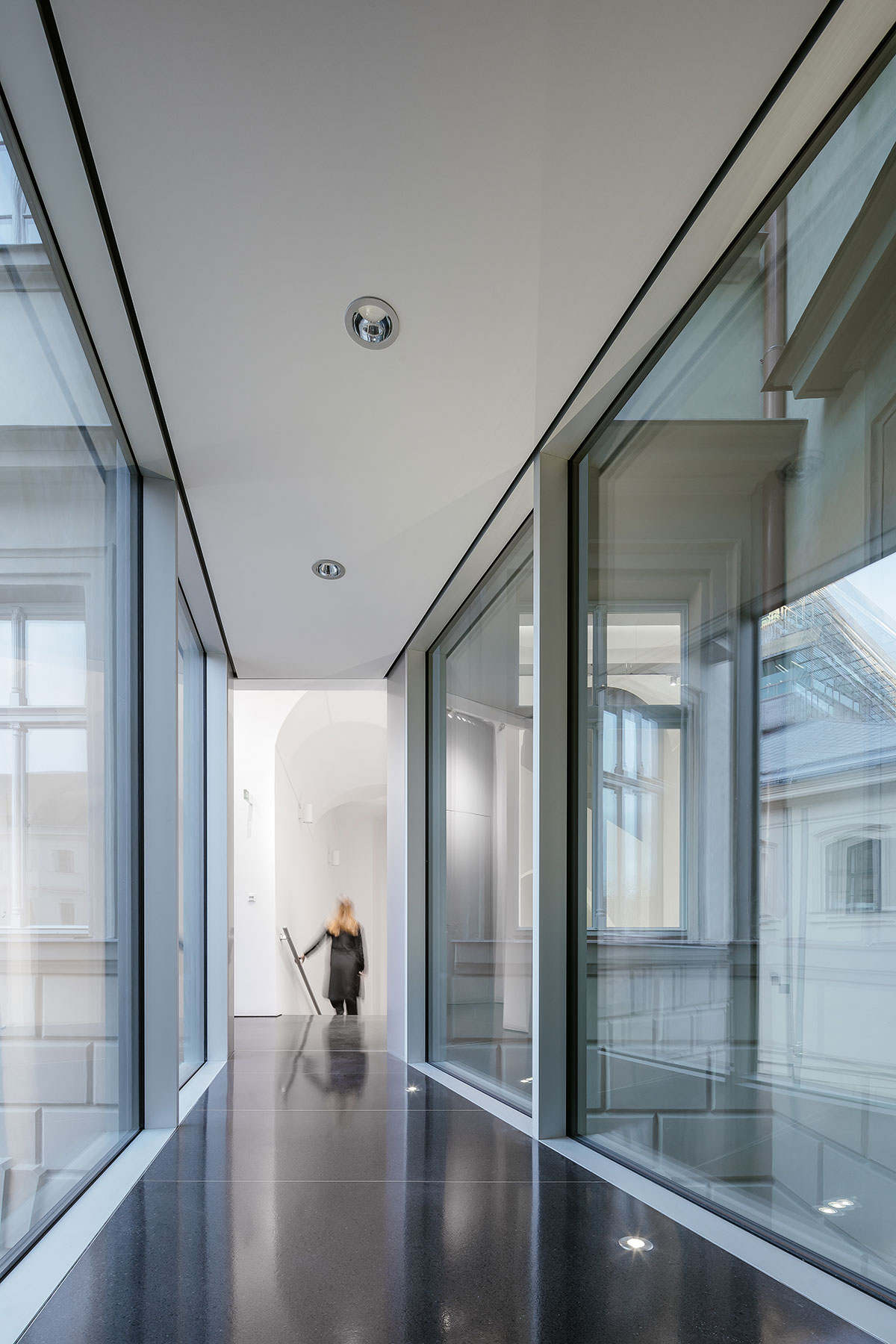
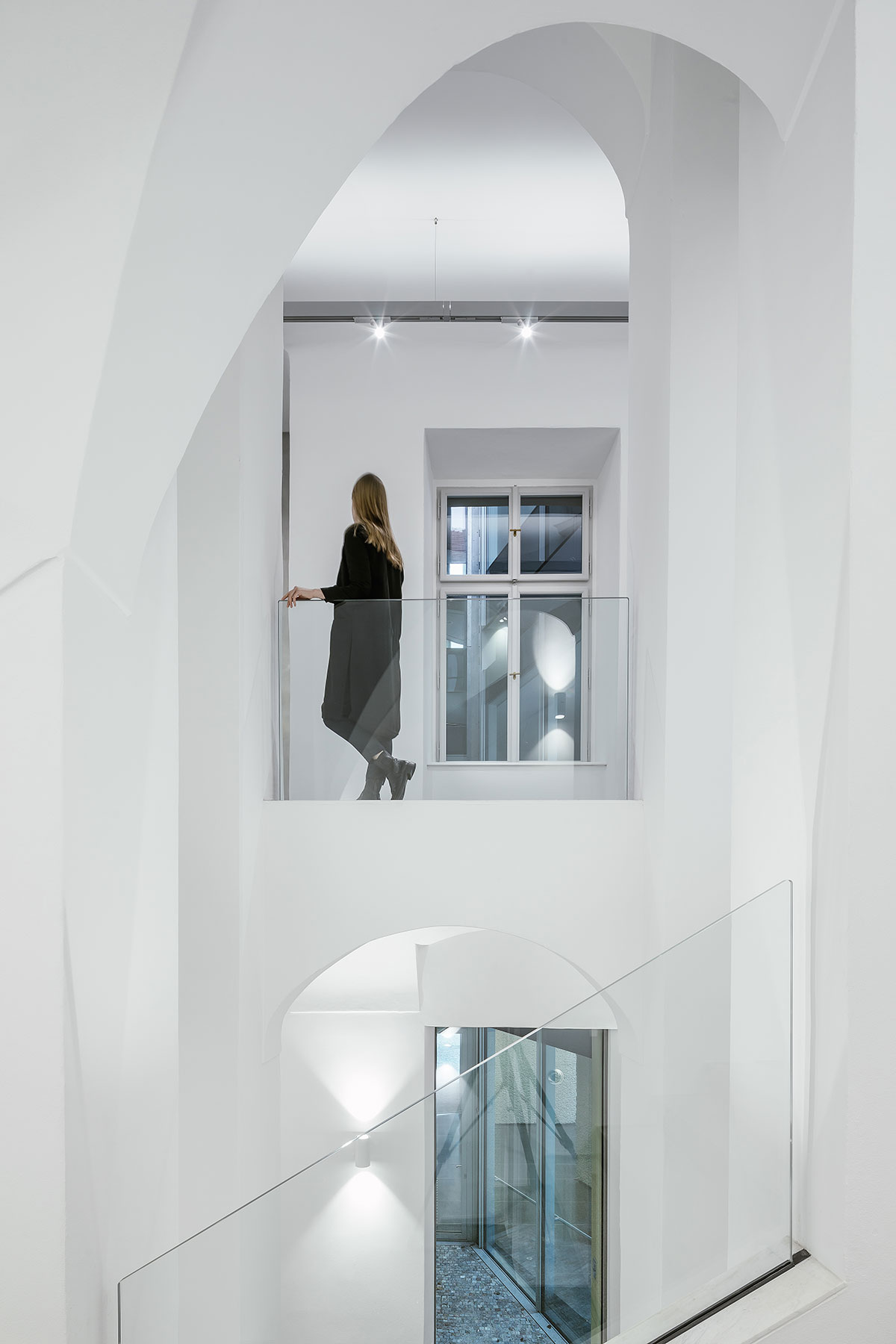



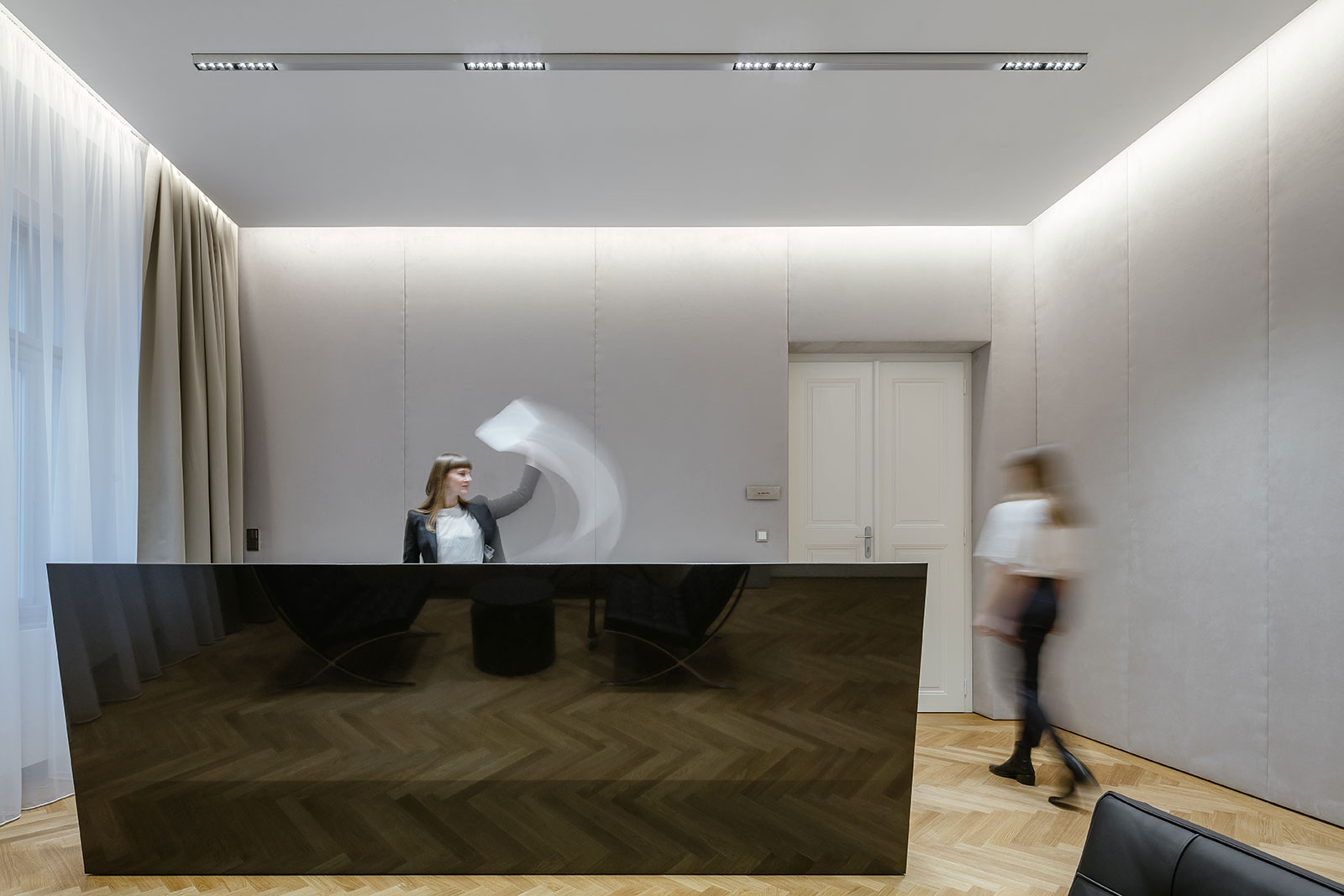
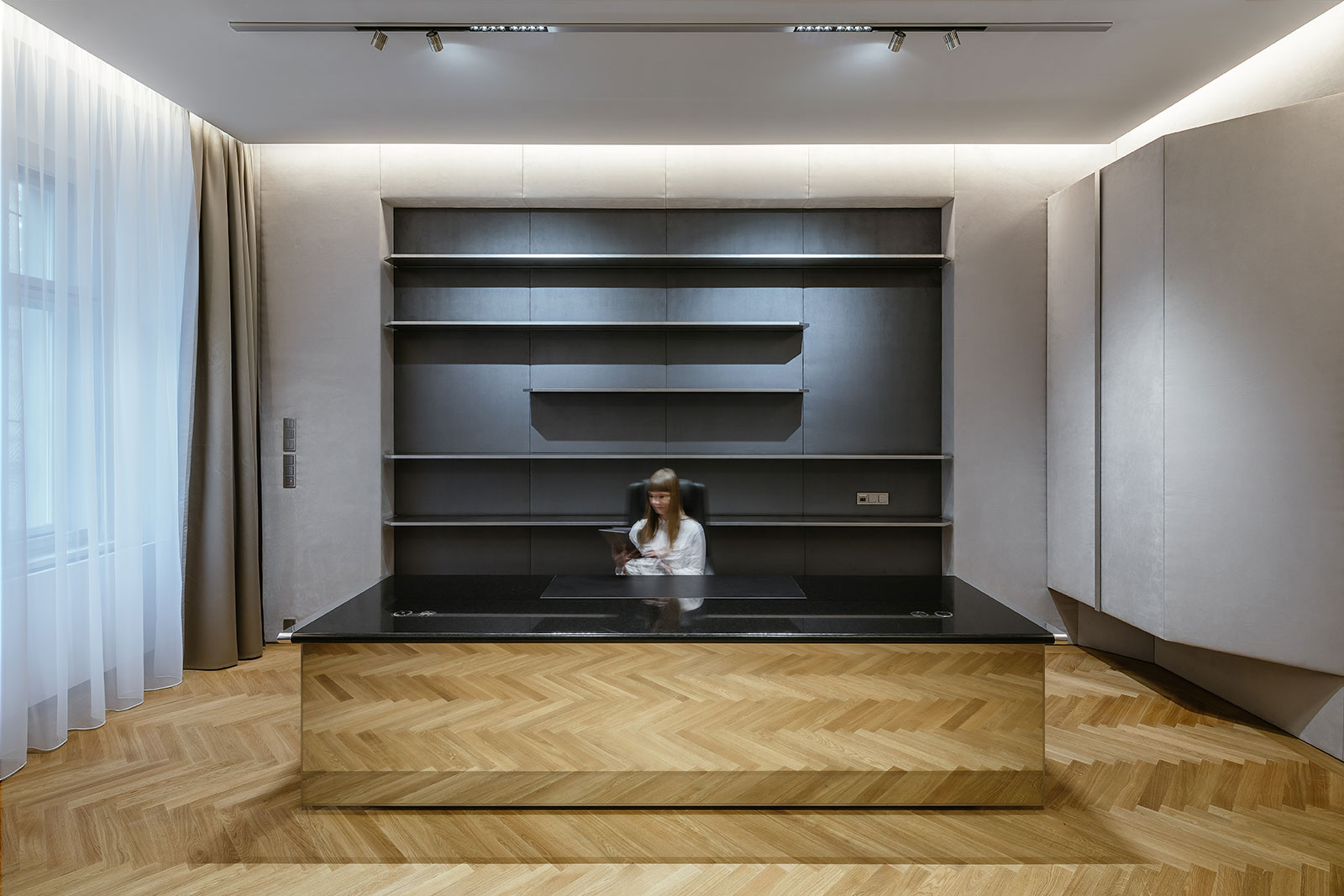
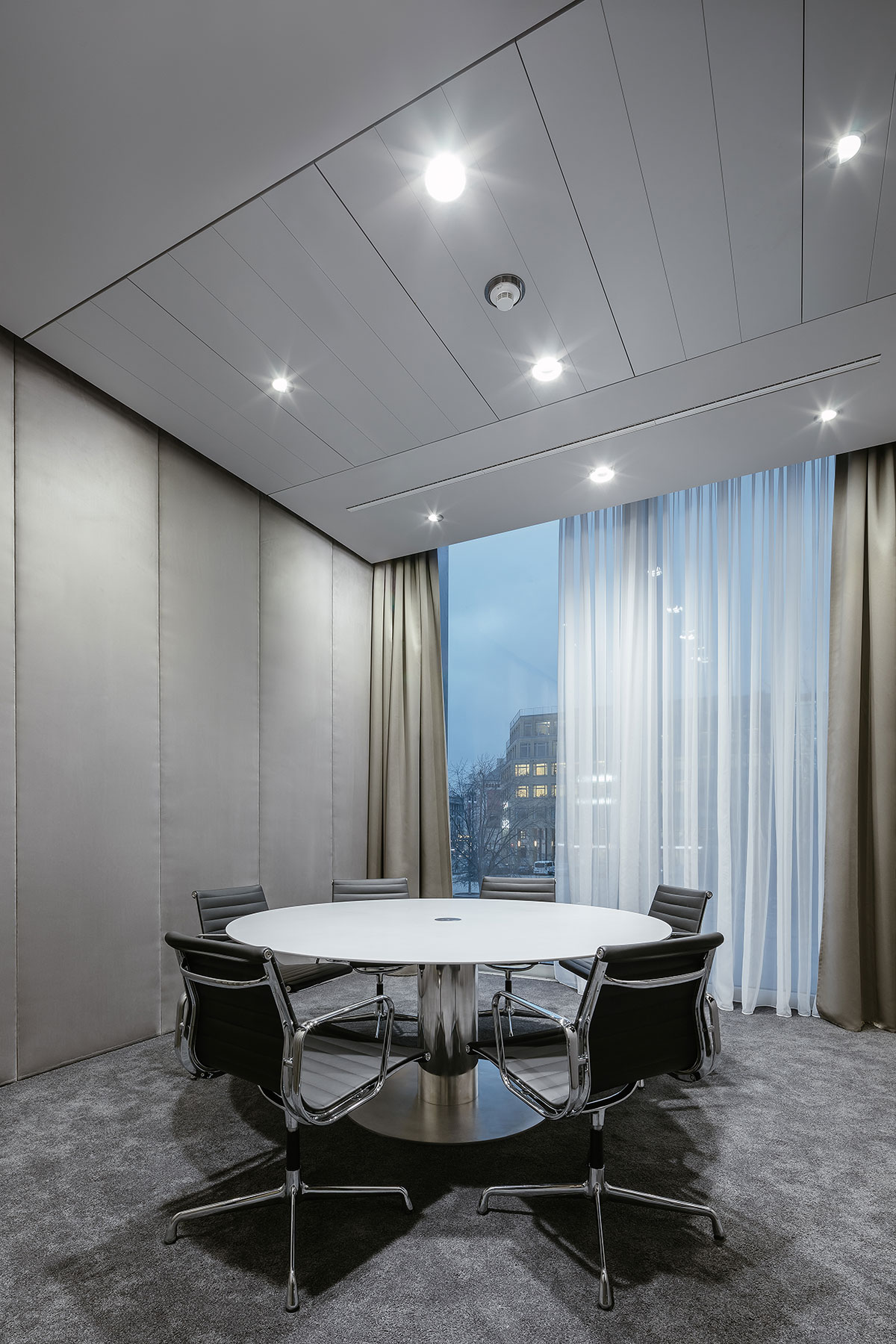
About AARH
The Radan Hubička Architectural Studio (AARH) is best known in the field of designing residential buildings and private residences. In addition to new buildings, it also deals with the reconstruction of historical buildings, including cultural monuments.
AARH projects are characterized by generous solutions, emphasis on detail, and innovative material design. In his realizations, Radan uses exotic woods, minerals, and metals in surprising arrangements. He pays unprecedented attention to detail and material concept. He also designs his own furniture and elements for his interiors.
Although AARH also realizes large-scale projects (V Tower residential building, Office Hybernia), it retains the character of a family business. The studio‘s core consists of a handful of architects who believe in a personal approach to the client. AARH collaborates with eminent development and investment companies, as well as the largest construction firms in the republic.
AARH’s architectural works are published in Czech and foreign magazines, as well as books on architecture. The studio has collected a number of awards, among other a nomination for the European Mies van der Rohe award for apartment building XY, and the title Building of the Year 2021 for the Office Hybernia project.
[cite]

